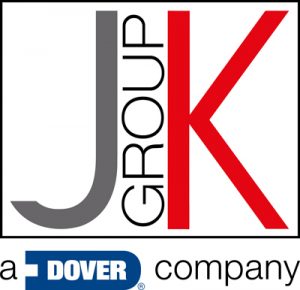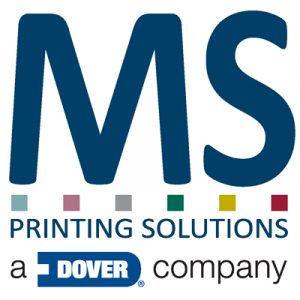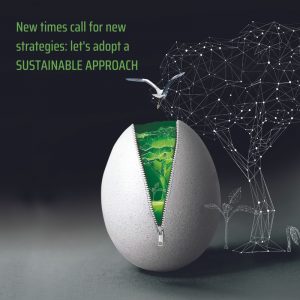Nowadays Textile Printing industry faces a huge challenge: to carry out a sustainable production chain, thus ensuring a cost-effective printing output. Textile industry consists of an extremely complex and lengthy supply chain, which involves many different processes and various partners. Manufacturers and retailers have been focusing in reducing the environmental impact of the textile industry, still sustainability and circularity require a lot of shared commitment of the players involved in every single stage of the process.
This positive evolution of the full production chain requires time. We find ourselves to be at a turning point as different technologies rise such as textile printing with pigment inks. In the meantime, there are some immediate and effective actions to do, one of them is to consider dye-sub printing.
Dye-sub is an opportunity for digital textile printing and numbers confirm this statement. Dye-sub enables around 40-percent gas saving and around 20-percent electricity saving1 thanks to: a short process, no-padding, dry heat, no-washing and no-steaming. That’s why dye-sub formulas will continue to be extremely popular. In 2026 this ink type is forecast to be the dominant one with more than 6,000 metric tonnes2.
In 2020 the annual production of around 57 million metric tons3 of polyester had a market share of approximately 52 percent of the global fiber production. Recycled polyester is a fast-growing trend, with an increase of around 500 percent from 2019 to 20224. Dye-sub printing enables around 99 percent water savings, because around 98 percent of the water used in paper production is recycled after being used. Recycled polyester is an almost closed virtuous circle, whose effectiveness is demonstrated by the public commitments of Textile Exchange members. Various globally known brands are already committed to recycled polyester, many more are on a path leading to the use of recycled polyester or polyester coming from more sustainable sources, accordingly to the data provided by Textile Exchange Preferred Fiber & Materials Market Report 20215.
Paper is an almost completely virtuous circle. Paper can be 100 percent recycled after the use and this alone is a huge advantage. In addition, using low weight paper reduces the carbon footprint of 40g/m2. In order to produce paper, you need 3.7L/kg, but around 98 percent of the water used in the process is re-used6. It’s a circular process inside another circular process. So, in dye-sub printing: two of the main raw materials involved have a relatively low environmental impact and they have an almost ideal circularity in their processes.
But this is not all that is necessary. To carry out a sustainable production chain it is important to manage and track the suppliers and the chemicals by partnering with suppliers and by removing hazardous substances from the manufacturing process, and the increase in talks about traceability seems to confirm this tendency.
 This is exactly what J.K. Group does for its inks, which are environmentally friendly, since we put a lot of effort in research and development to innovate more and more and reach top-tier certified quality, complying with regulatories (such as GHS), ZDHC MRSL PARAMETERS L3, brand owners’ standard MRSL lists, ECO PASSPORT by OEKO-TEX®, together with constantly updating already existing inks’ formulas to always be aligned with regulatories.
This is exactly what J.K. Group does for its inks, which are environmentally friendly, since we put a lot of effort in research and development to innovate more and more and reach top-tier certified quality, complying with regulatories (such as GHS), ZDHC MRSL PARAMETERS L3, brand owners’ standard MRSL lists, ECO PASSPORT by OEKO-TEX®, together with constantly updating already existing inks’ formulas to always be aligned with regulatories.
 MS Printing Solutions also puts a lot of effort in carrying out a sustainable production chain, choosing a supplier that understands the importance of sustainable machinery certification is essential to achieve an energetical and environmental performance, an eco-efficient value of the machine and a lower carbon footprint in working condition. MS Printing Solutions is perfectly aware of this, that’s why it joined the “Sustainable Technologies” project launched by ACIMIT, the Association of Italian Textile Machinery Manufacturers. The gold standard of this project is the Green Label: a voluntary declaration by Italian textile machinery manufacturers designed to highlight the energy and/or environmental performance of a given machine, calculated in reference to a production cycle defined by the manufacturer for labelled machinery. Without internationally recognized standards for classifying energy and/or environmental performance for textile machinery, Italian manufacturers highlight some machinery performance data.
MS Printing Solutions also puts a lot of effort in carrying out a sustainable production chain, choosing a supplier that understands the importance of sustainable machinery certification is essential to achieve an energetical and environmental performance, an eco-efficient value of the machine and a lower carbon footprint in working condition. MS Printing Solutions is perfectly aware of this, that’s why it joined the “Sustainable Technologies” project launched by ACIMIT, the Association of Italian Textile Machinery Manufacturers. The gold standard of this project is the Green Label: a voluntary declaration by Italian textile machinery manufacturers designed to highlight the energy and/or environmental performance of a given machine, calculated in reference to a production cycle defined by the manufacturer for labelled machinery. Without internationally recognized standards for classifying energy and/or environmental performance for textile machinery, Italian manufacturers highlight some machinery performance data.
New times call for new strategies and today, more than ever before, a sustainable approach must be adopted in every stage of the entire supply chain. We find ourselves at a tipping point and we must act for our industry’s green future.
References:
1 Data source www.sublitex.com
2 J. Link, Ink market review forecasts modest contractions, WTiN, 2 September 2022, on www.wtin.com
3 Textile Exchange, Preferred Fiber & Materials Market Report 2021 on www.textileexchange.org
4 Data Source LARIOTEX
5 Data accessible on www.textileexchange.org
6 Data source www.beaverpaper.com
This sponsored content was provided by JK Group
November 22, 2022





